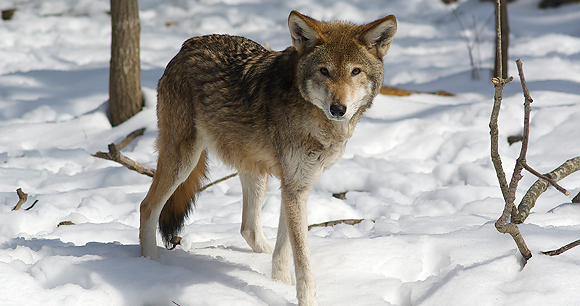
The Earth is now in the midst of its sixth major animal (and plant) extinction. The last mass extinction—approximately 65 million years ago—caused the disappearance of the dinosaurs. Although extinctions are naturally occurring, the current mass extinction is unique in that it is caused almost entirely by humans.
According to the IUCN Red List of Threatened Species, the global authority on species' conservation status, one out of four of the world’s mammals and over 40 percent of amphibians are threatened with extinction due to human activity.
Simply put, nature cannot support the pressure humanity is placing on the planet. Overconsumption and unsustainable human population growth are bringing about massive changes in the environment and endangering wildlife by disrupting ecosystems in numerous ways.
Large tracts of native rain forests in Indonesia are cleared to make way for palm oil plantations for processed foods and cosmetics—displacing orangutans, Sumatran tigers and other forest dwelling animals. Eucalyptus-rich forest areas of Australia are being rapidly destroyed, eliminating habitat critical to the survival of the threatened koala. Converting forests into agricultural land threatens spectacled bears in South America. Animals who survive the habitat destruction, such as radiated tortoises in Madagascar, are collected and smuggled by dealers to supply the exotic pet trade. Wolves, after a successful recovery in Western US states, are now persecuted by ranchers seeking unfettered livestock range.
Bears, especially the endangered Asiatic black bear, are targeted for gallbladders and bile used in traditional Asian medicines and cosmetics. Bear paws are taken to make high-priced soups, as well. As black bears across Asia have dwindled, poachers and smugglers have set their sights on the more plentiful American black bear to supply the trade. Bear carcasses are found in the woods with just the gallbladders and paws removed.
The African elephant population was halved in the 1970s and 1980s from approximately 1.3 million down to 600,000 as poachers slaughtered these majestic creatures to extract their ivory tusks. Elephants and other animals such as cheetahs are hunted for “sport" as well.
The threat for all these species continues today. Other threats include pollution, hunting for wild game meat (bushmeat), introduction of invasive species into the environment, and climate change.
Learn what you can do to help protect endangered species.
Protection
There are international treaties and domestic laws that aim to halt the decline of species in need. The Convention on International Trade in Endangered Species of Wild Fauna and Flora (CITES) is a United Nations Convention that regulates the global trade in vulnerable wildlife.
In the US, threatened and endangered species are protected under the Endangered Species Act (ESA). “Threatened” species, under the ESA, are species that are likely to become endangered, and “endangered” species are those that are “in danger of extinction throughout all or a significant portion of” their range. It is illegal to “harass, harm, pursue, hunt, shoot, wound, kill, trap, capture, or collect” a species listed under the Act. Over 1,700 threatened and endangered animals and plants in the US and other countries of the world—the gray bat, the red wolf, the Wyoming toad, and the mountain sweet pitcher plant—receive the ESA's protection.